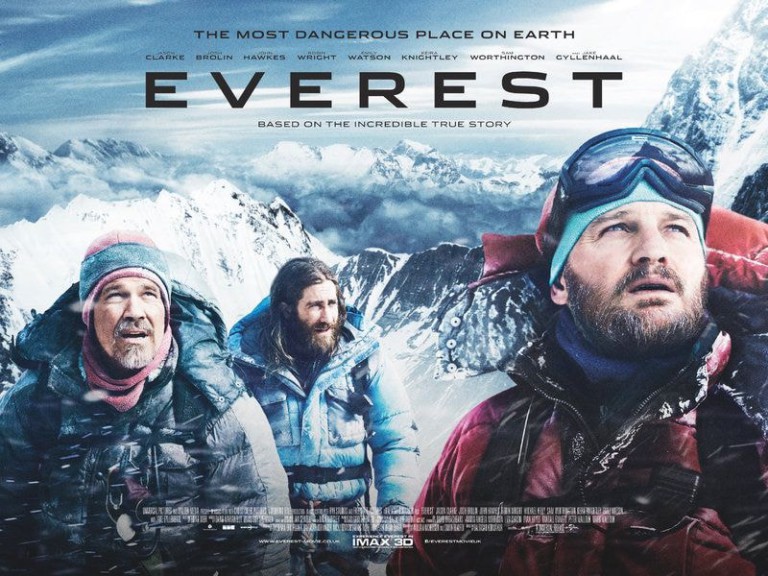Nepali films have been an integral part of Nepali culture, and reflect the country’s culture, society, concerns, history, beliefs, and natural beauty. Though films influence the mass culture, they also keep changing from one era to another. In one sense, Nepali movies, which have served as records of the eras, could be characterized as the country’s storytellers since they reflect commonly held attitudes and beliefs about the Nepali culture, besides portraying contemporary trends and events.
For example, a film like Himalaya produced in 1999, was the first Nepali film to receive an Academy Award nomination for the Best Foreign Film. Directed by French director and photographer Eric Valli, this film focuses on a group of villagers, in a remote village of Dolpo in far-western Nepal, who are known to make annual treks with a caravan of yaks to trade salt for grain. Shot exclusively on the rough mountain terrains of Dolpo, this film nominated for the 72nd annual Oscar Awards 2000, basically portrays the life of salt traders who lead yak caravans along a long and difficult trek across the Himalayas to Tibet. The film also depicts the bitter life of the mountain people and their strange rituals.
The other movie that reflects Nepali life and culture is Even When I Fall, which follows the lives of performers in a circus, who had been trafficked into Indian circuses as young children. British directors Sky Neal and Kate McLarnon worked with the circus for over six years and narrated the story through two female performers, Sheetal and Saraswoti, each with their own heart-breaking stories. According to this expose, each year, 10,000 children are abducted or sold to Indian circuses. They train and perform under harsh and abusive conditions, rarely (if ever) see their families and lose out on a proper childhood. The film was released in 2017.
Seto Surya is another movie that reflects the psychology of remote Nepali village folks when the protagonist, an anti-regime secessionist, had to undergo social, physical and political obstacles after he returns to his village for his father’s funeral. Screened at the Venice Film Festival and the Toronto International Film Festival, the film directed by Deepak Rauniyar, has tried to show that even 10 years after the end of Nepal’s Maoist insurgency, the scars and divisions it caused have not been forgotten.
Another film that reflects the Nepali society is Red Monsoon directed by Eelum Dixit in 2014. The film there’s the promiscuous, trouble-making middle-aged neighbor, the abusive father, the comic servant, the abused daughter-in-law, the loving but over-protective father and the disgraced daughter who elopes with a man of her choice. But, things don’t quite turn out as they would in a Bollywood film.
Katmandu, A Mirror in the Sky (2011)
Spanish director Iciar Bollain captures the life of Laia, a young teacher and social worker who, like so many real-life travelers, arrives in Kathmandu full of idealism, but soon finds out how hard it is to make a difference within a broken system. She marries a Nepali man so she can stay in the country and continue her work in the slums of Kathmandu, soon finding herself falling in love with him for real. Although a Spanish production, the film is in English and Nepali.
Who Will Be a Gurkha (2012)
Nepal’s most famous export is its Gurkha soldiers, who have been recruited into a special regiment of the British army for over 200 years. Young men are enlisted from around Nepal in a rigorous six-month selection process. Earning a place in the Gurka regiment not only brings the selected prestige, it also gives them a British salary and the chance to travel the world. Who Will Be a Gurkha, a documentary film by Nepali director Kesang Tseten, follows this stringent three-phase selection process.
The Sari Soldiers (2008)
The Sari Soldiers, directed by Julie Bridgham, follows six women who were deeply involved in Nepal’s civil war in various ways: Devi, whose daughter was kidnapped by the Royal Nepal Army; Kranti, a Maoist commander; Rajani, a Royal Nepal Army officer; Krishna, a monarchist; Mandira, a human rights lawyer; and Ram Kumari, a pro-democracy student activist. It shows that even in a country as patriarchal as Nepal, women are not mere bystanders in society.
Highway to Dhampus (2014)
Highway to Dhampus, directed by Rick McFarland, was the first feature-length film to have been shot almost entirely in Nepal by an American crew against the beautiful backdrop of the country’s mountains. The story revolves around foreigners Elizabeth and Colt, who visit an isolated orphanage in the mountains, supposedly to do charitable work. However, their intentions are not what they first seem. The film takes this plot and goes on to reflect the lives of ordinary people living an ordinary life while answering questions about love, giving and making a difference.
Everest (2015)
Everest, directed by Baltasar Kormákur, is based on the book Into Thin Air by Jon Krakauer, which, many claim, was far more superior. It recounts the disastrous Everest expedition that Krakauer and a group of foreign and Nepali climbers embarked on in 1996, when eight of them, including the expedition leader, was killed. The book is certainly more nuanced than the film, which was criticized for erasing the important roles of the Sherpa people, a major ethnic group in Nepal, during the expedition. Although the movie has its fair share of problems, adventure film buffs may appreciate it just for the subject.
Sherpa (2015)
If mainstream Hollywood has been guilty of sidelining the Sherpa people who are essential to the lucrative Everest-climbing industry, Sherpa recenters them. Australian filmmaker Jennifer Peedom got the idea for the documentary after hearing about the violent confrontations between Sherpas and foreign climbers in 2013. She filmed it during the 2014 climbing season, during which an avalanche killed 16 Sherpas, and was – until the earthquakes the following year – the deadliest day on the mountain. The film focuses on Phurba Tashi, a Sherpa who had scaled Mt Everest 21 times but was under pressure from his family to retire due to the high risks involved.
(Compiled from Agencies)









Comment